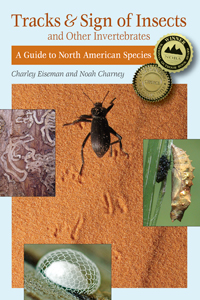On March 18 during my lunch break I collected an aspen twig with some distinctive swellings. I knew they were caused by Hexomyza schineri, a fly in a family (Agromyzidae) that is mostly composed of leafminers, and was hoping to get photos of an adult.
Well, last night I checked the sandwich bag in which I had placed the twig, and this little fly was running around inside:
I brought the bag downstairs, along with another that was full of assorted little green wasps (I’ll get to these in another post), to put it in the fridge overnight. I’ve gotten into the habit of doing this with the various tiny bugs I raise, because otherwise there’s a pretty good chance they will fly away before I get a decent picture. Just when I was about to put the bags in the fridge, I took a last look at the aspen twig and saw a second fly in the process of emerging! It was pale and had a big, translucent, spherical balloon projecting from its forehead. I had read about this before but never thought I’d actually see it happen. Flies in the group Cyclorrhapha are called the “circular-seamed flies” because they leave a circular opening when they emerge from their puparium (the hardened larval skin surrounding the pupa). This opening is created by inflating the ptilinum, which is the balloon-like structure I saw. I had always pictured the ptilinum disappearing immediately after expanding to pop off the lid of the puparium, but the fly had worked itself halfway out of the gall and it still had a big balloon on its face. I raced back up two flights of stairs, got out my camera, and managed this blurry shot showing just a hint of the balloon, which was now quickly deflating.
The abdomen is still partially in the gall in this shot–note the flap of bark over the fly’s rump. Here is one more shot, taken just after the fly had freed itself, with the bark flap visible at the left edge of the photo.
Both of these photos were taken through the plastic of the sandwich bag. Within a minute or so, this fly looked pretty much like the first one: darkened, with its wings fully expanded and its head substantially shrunken. The second fly was larger (3 mm vs. 2 mm); I’m guessing that means the first one was a male and the second was a female. The flaps covering their emergence holes in the galls make them very difficult to see with the naked eye–so anytime you see an obvious hole in one of these galls, it is probably the exit hole of a parasitoid wasp.
The semicircular slit spanning the lower half of the fly’s face in this last photo is the frontal suture. This is the opening through which the ptilinum is thrust when the adult fly is ready to enter the world.









Here is another balloon faced fly. This one never made it out of the gall. Got stuck and finally died. http://bugguide.net/node/view/268433
That’s about how far out this one was when I first spotted it.
Pingback: Goldenrod Ball Galls | BugTracks
Pingback: Leaf-mining Flies | BugTracks
Pingback: Flies from a Goldenrod Leaf | BugTracks
Pingback: Balloon-faced Flies, Part 2 | BugTracks
Pingback: Balloon-faced Flies, Part 3 | BugTracks